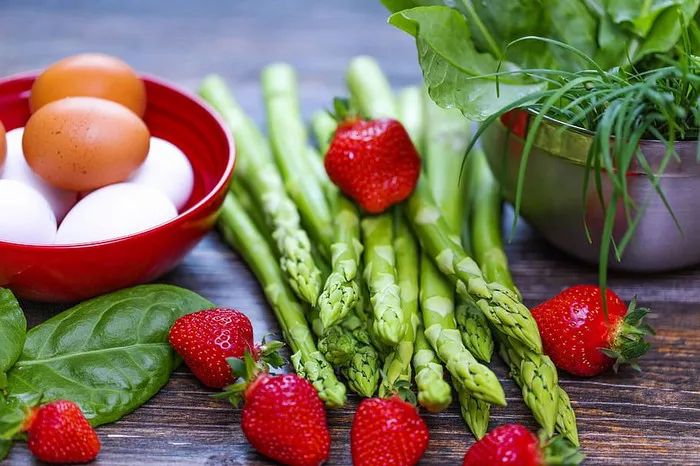Chow Mein noodles are a staple in Chinese cuisine, loved for their versatility and satisfying texture. Whether you enjoy them crispy or soft, this popular dish is easy to prepare at home with just a few simple ingredients. In this article, we will walk you through every step of the process for cooking Chow Mein noodles, from choosing the right noodles to preparing the perfect stir-fry. Let’s get started!
Understanding Chow Mein Noodles
Before we dive into the cooking process, it’s important to understand what Chow Mein noodles are. The term “Chow Mein” translates to “stir-fried noodles” in Chinese, and the dish is traditionally made with wheat-based noodles. Chow Mein noodles come in two varieties: fresh and dried. Fresh noodles are soft and can be cooked quickly, while dried noodles need to be boiled before stir-frying. Both types are widely available in supermarkets, Asian grocery stores, and online.
Choosing the Right Noodles
When making Chow Mein, it’s essential to select the correct noodles. There are two common types to choose from:
Fresh Chow Mein Noodles: These noodles are softer and more elastic. They cook very quickly and can be stir-fried directly without boiling.
Dried Chow Mein Noodles: These noodles need to be boiled first before stir-frying. They take a bit longer to prepare but have a firmer texture when cooked.
Both fresh and dried noodles work well for Chow Mein, so the choice depends on your preference and the ingredients available.
Ingredients for Chow Mein
To make a simple yet delicious Chow Mein, you will need the following ingredients:
- Chow Mein noodles (fresh or dried)
- Vegetable oil (for stir-frying)
- Soy sauce (light and dark for a balanced flavor)
- Oyster sauce (for umami richness)
- Sesame oil (for flavor)
- Garlic (minced)
- Ginger (optional, but adds a nice zing)
- Vegetables (common choices are cabbage, carrots, bell peppers, onions, and bean sprouts)
- Protein (optional, you can use chicken, beef, shrimp, or tofu)
- Green onions (for garnish)
You can adjust the ingredients based on your preferences. For example, if you like a spicier Chow Mein, you can add chili peppers or chili oil.
Preparing the Noodles
If you’re using fresh Chow Mein noodles, you don’t need to boil them beforehand. You can simply separate the noodles and toss them into the stir-fry. However, if you’re using dried Chow Mein noodles, here’s what you need to do:
Boil the noodles: Bring a large pot of water to a boil. Add the dried Chow Mein noodles and cook them according to the instructions on the package. Usually, this takes 3-5 minutes, but check to ensure they are tender but still firm to the bite.
Drain the noodles: Once the noodles are cooked, drain them and rinse them under cold water. This helps stop the cooking process and prevents them from becoming mushy.
Toss with oil: After draining, toss the noodles with a small amount of vegetable oil to prevent them from sticking together. This is an essential step, especially if you plan to make a stir-fried dish.
Preparing the Stir-Fry
Now that your noodles are ready, it’s time to start the stir-fry. Chow Mein is typically cooked in a wok, but you can also use a large frying pan if you don’t have one. Here’s how to do it:
Heat the wok: Place your wok or large frying pan over medium-high heat. Let it heat up for about 1-2 minutes until it starts to get hot.
Add oil: Pour in about 2 tablespoons of vegetable oil. Swirl the oil around the pan to coat the bottom.
Stir-fry the garlic and ginger: Add minced garlic (and ginger, if using) to the hot oil. Stir-fry for about 30 seconds until fragrant. Be careful not to burn the garlic, as it can turn bitter.
Cook the vegetables: Add your choice of vegetables to the wok. Common options include sliced bell peppers, cabbage, carrots, and bean sprouts. Stir-fry them for about 3-5 minutes until they are tender-crisp. If you’re using harder vegetables like carrots, you may want to slice them thinly to ensure they cook evenly.
Add the protein: If you’re using meat, tofu, or shrimp, add it to the pan and stir-fry until fully cooked. This usually takes 3-4 minutes for chicken or beef, 2-3 minutes for shrimp, and 4-5 minutes for tofu.
Season the stir-fry: Once the vegetables and protein are cooked, it’s time to add the sauces. Pour in 2-3 tablespoons of soy sauce, 1 tablespoon of oyster sauce, and 1 teaspoon of sesame oil. You can adjust the amount based on your taste preferences. Stir everything to combine, ensuring that the vegetables and protein are coated with the sauce.
Adding the Noodles
At this point, your vegetables and protein should be ready. Now it’s time to add the prepared noodles:
Add the noodles: Gently add your cooked noodles to the wok. Use tongs or chopsticks to toss the noodles into the stir-fry, making sure they get evenly mixed with the vegetables and sauce. Be careful not to break the noodles. If the noodles seem sticky, you can add a little more oil or a splash of water to loosen them up.
Stir-fry the noodles: Stir-fry the noodles for another 3-4 minutes. The goal is to heat them through and let them soak up the flavor from the sauces. If you like crispy noodles, let them sit for a minute before tossing them again, allowing the noodles to crisp up slightly.
Serving Chow Mein
Once the noodles are cooked to your liking, it’s time to serve:
Garnish: Top your Chow Mein with freshly chopped green onions, sesame seeds, or even a drizzle of chili oil for extra flavor. You can also add a few sprigs of cilantro or bean sprouts for a fresh crunch.
Serve hot: Chow Mein is best enjoyed immediately after cooking. It can be served as a main dish or as a side dish alongside other Chinese dishes like Sweet and Sour Chicken, Spring Rolls, or Dumplings.
Variations of Chow Mein
Chow Mein is a versatile dish that can be customized in many ways. Here are a few popular variations:
Crispy Chow Mein: If you prefer crispy noodles, cook the noodles in a little more oil and let them sit in the pan for a minute before tossing. This gives them a nice crisp texture. Some people even pan-fry the noodles separately and then top them with the stir-fried vegetables and protein.
Vegetarian Chow Mein: For a vegetarian version, simply skip the meat and add extra vegetables like mushrooms, baby corn, or snow peas. Tofu is also a great addition for extra protein.
Spicy Chow Mein: If you like a bit of heat, add sliced chili peppers, chili paste, or a few dashes of chili oil. You can also sprinkle some red pepper flakes on top for extra spice.
Chicken Chow Mein: To make a traditional Chicken Chow Mein, use sliced chicken breast or thigh meat. You can marinate the chicken in a little soy sauce and cornstarch before adding it to the stir-fry for extra flavor and tenderness.
Common Mistakes to Avoid
While cooking Chow Mein is fairly simple, there are a few common mistakes to watch out for:
Overcooking the noodles: Be careful not to overcook your noodles, especially if you’re using dried noodles. They should be cooked until just tender, then immediately drained and rinsed to stop the cooking process.
Using too much soy sauce: It’s easy to go overboard with soy sauce, which can make the dish too salty. Start with a small amount and taste as you go. You can always add more, but it’s hard to fix if it’s too salty.
Not stirring the noodles enough: Chow Mein requires constant stirring to ensure the noodles don’t stick and burn. Use a spatula or tongs to keep things moving in the wok.
Final Thoughts
Cooking Chow Mein noodles at home is an easy and satisfying experience. Whether you like your noodles soft and saucy or crispy and golden, this dish is a great option for a quick meal that everyone will love. By following these steps and tips, you can create a flavorful, restaurant-quality Chow Mein right in your own kitchen. Enjoy experimenting with different proteins, vegetables, and seasonings to make this dish your own!
Happy cooking!
Related topics:























